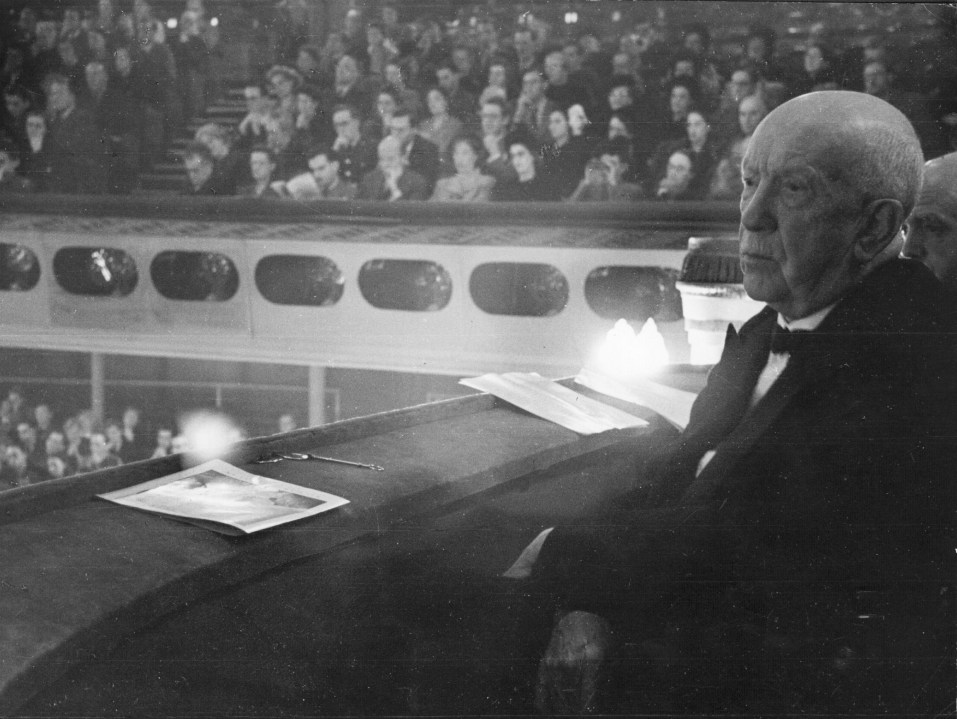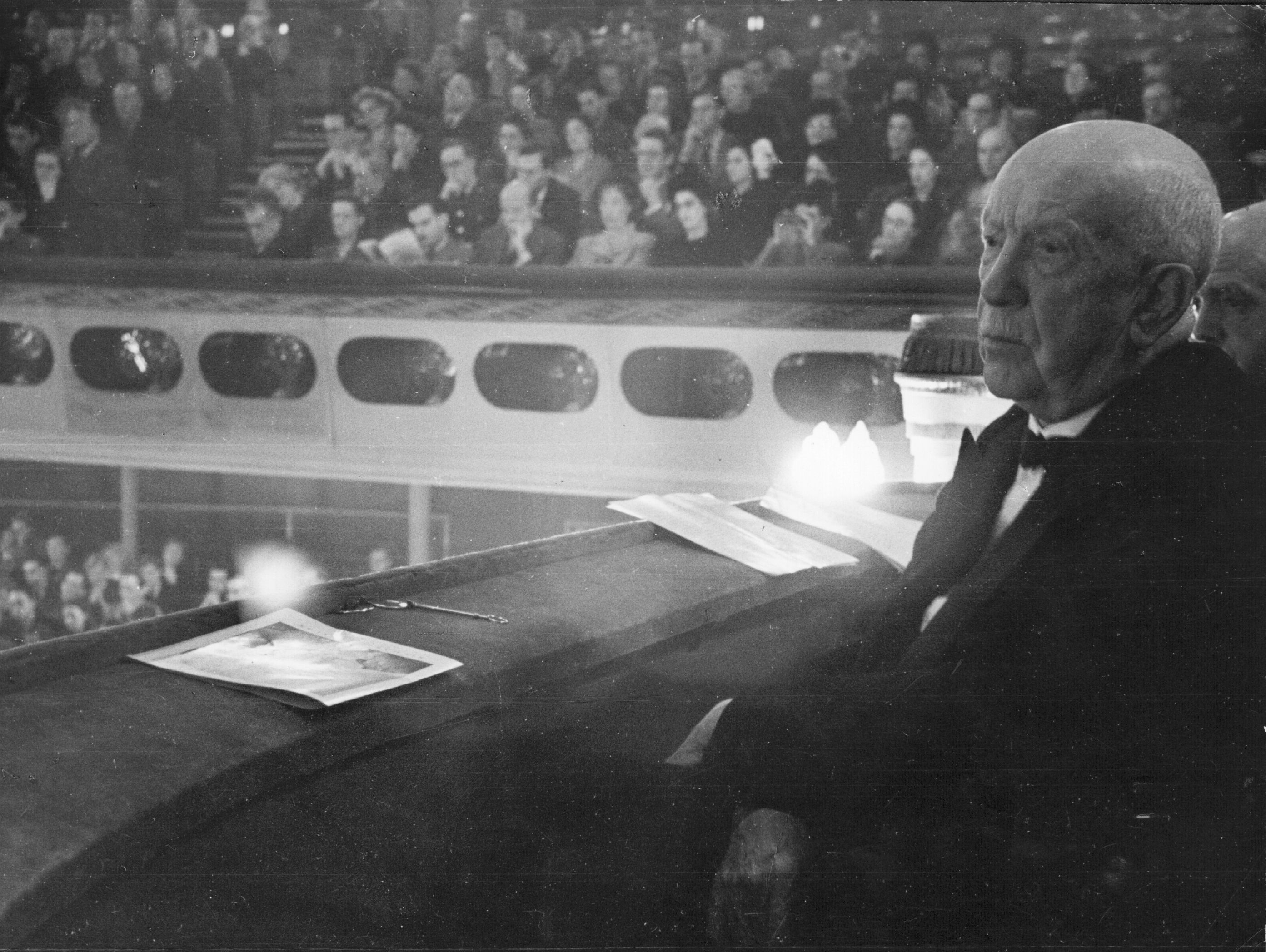With the ardent zeal characteristic of the freshly converted, I found myself channelling waves of anger towards Stanley Kubrick. The closing bars of Also sprach Zarathustra had utterly turned my head, transforming what had been my passing interest in the music of Richard Strauss into an infectious bout of Strauss monomania. Kubrick’s exquisitely consummated marriage of music and image, however, dared to hoodwink our collective consciousness into believing that Strauss’s 1896 Nietzsche-inspired tone-poem is actually sci-fi space music – more Star Wars than Übermensch – a reality that felt unmerited and unjust.
The opening sequence of Kubrick’s 1968 film 2001: A Space Odyssey used the trumpet and timpani fanfares that launch Also sprach Zarathustra to underscore cosmic glimpses of the sun rising from behind the earth, but the celestial immobility of Strauss’s concluding bars – harmonically ambiguous woodwind chords drifting towards the heavens – have more to say about music’s evolution during the next century than has been generally recognised, rubbishing the truism that constructing a pathway through the birth pangs of musical modernism that wilfully sidesteps Richard Strauss is surprisingly easy to do.
Mahler dies in 1911. In 1913 Stravinsky’s Rite of Spring launches the modernist project, apparently single-handedly, with a fully-dilated bassoon solo, while Schoenberg’s 12-tone midwifery makes old-school classical audiences reach for an aural epidural. Meantime Zarathustra, and other Strauss orchestral showpieces like Don Juan, Ein Heldenleben and Tod und Verklärung, speak with positivistic Wagnerian weight. Strauss eyeballs expressionist atonality in his 1909 opera Elektra, but Der Rosenkavalier will soon enough restore the reassurance of tonality. And as Schoenberg’s moonstruck Pierrot lunaire etches itself around Viennese psychological angst, and Stravinsky moves forwards by invoking pagan prehistory, Strauss peers into the oncoming century with his aesthetic feet placed stolidly in the nineteenth century.
When he visited London in 1897 to conduct Tod und Verklärung, Strauss paired his early tone poem with music by Mozart. Riccardo Chailly and the Leipzig Gewandhaus Orchestra’s residency at the Barbican this month will follow suit, Strauss counterpointed with Mozart once more, as Chailly conducts what he terms Strauss’ six ‘core’ tone poems – Don Juan, Till Eulenspiegel, Ein Heldenleben, Macbeth, Also sprach Zarathustra and Tod und Verklärung. Also on the programme is Strauss’ valedictory string piece Metamorphosen; but not the evergreen Don Quixote, which as Chailly reminds me, was not conceived as a tone poem.
Since I travelled to Leipzig last year to talk to Chailly, and hear him perform Strauss on home turf, the story has already moved on. In September it was announced that next year he will step down as the orchestra’s eighteenth Gewandhauskapellmeister to be replaced by Andris Nelsons. One of the most creatively daring conductor/orchestral partnerships of recent years is about to come to an end. And my advice to any wavers? These concerts could well be your last chance to hear them in action. Just go.
A recurring itch of the Chailly era, one that his cycles of symphonies by Schumann, Mahler, Beethoven and Brahms have vigorously scratched, has been a consideration of how all this music projects into the modern world – necessary work you would imagine for an orchestral institution with a history that stretches back to the 1780s. And Strauss’s straddling of Romanticism and Modernity is a symbolically apt endpoint for their time together.
‘Performing these six tone poems as a group,’ Chailly tells me, ‘represents a portrait of Strauss’s genius, a man who at the end of the nineteenth century conceived of a sound universe that, with Mahler’s, can be regarded as the beginning of a new century. There was a fight within him: Strauss lived out a parallel dichotomy between progressive and regressive tendencies. He is the great announcer of what will not happen.’
That last statement stops me dead in my tracks. Is Chailly implying that Strauss’s work, in fact, offers no direct pointers towards twentieth-century compositional thought? Or is he making a more specific point about the composer’s approach towards structure and narrative form? ‘Throughout his work,’ Chailly explains, ‘you hear hints of what will happen during the next century. Strauss’s harmony touches atonality and polytonality – and sometimes harmonic clusters in which I hear Penderecki or Ligeti. But, until Metamorphosen at the end of his life, he never fully left tonality behind. His nature was to introduce these kind of provocations – but always return to the ground of tonality.’
Chailly’s wise words rebound through the music. Following a chest-thumping orchestral climax, the second section of Ein Heldenleben creates an illusion of catapulting itself 50 years into the future with jagged, disjointed woodwind two-fingered salutes that could be momentarily mistaken for those swarming wind lines that carry the opening section of The Rite of Spring – or even for the outré wind writing typical of Ligeti’s 1970 Chamber Concerto.
And Also sprach Zarathustra is packed with equivalent structural sleights-of-hand. After the ritual splendour of that famed opening, where blocks of brass slam into timpani, Strauss confronts us with another sort of music altogether: cantabile string writing kept relentlessly buoyant as internal lines swim against each other, harmony operating as a current that ruthlessly maintains forward motion. Later, glistening woodwind figurations melt away to reveal a waltzing Viennese ballroom underneath, a sepia dream-sequence in which Richard shakes hands with his namesake Johann.
Strauss is absolutely not interested in carefully mapped passages of transition. Nothing is announced or trailed. Instead, one type of music abruptly transmutes – or simply becomes – another. As Strauss was assembling Also sprach Zarathustra, Mahler was completing his Third Symphony and the essential differences between the two composers are stark. Mahler is motivated by expanding form – foundations made ever more ornate, allowing his grand symphonic structures to grow and blossom. But Strauss answers the question ‘whither form’ by obsessively compressing material. The formal designs of Ein Heldenleben and Also sprach Zarathustra stage a kaleidoscope of smartly edited, cross-referenced scenes fuelled by abrupt jump-cuts and flashbacks – an approach to structure that ricochets out of Strauss’s experience as an opera composer, but also feels proto-cinematic. In Ein Heldenleben, Strauss will make the pomp of his opening music co-exist with those tonality-busting woodwind figurations, the bump and grind of their internal tension helping propel the music forwards through space.
Conducting that fails to pinpoint formal clarity fills Chailly with suspicion: ‘In Till Eulenspiegel, Strauss gives no precise indication of tempo. Instead the tempi are conceived proportionally – one tempo linked mathematically to the next. But the habit has become to impose a different tempo on each section, which can be interesting, but I don’t go in this direction for two reasons. Firstly I don’t like this way of pulling music around; secondly when Strauss himself recorded Till Eulenspiegel in 1927 he proved that he wanted directness. Play like this and the piece becomes very urgent.’
Till Eulenspiegel’s sped-up cartoon violence will end Chailly’s Barbican concerts, and the previous night will close with those visionary, prescient woodwind chords that, three or four years ago, turned me on to Strauss. Their harmonic audaciousness still fills me with wonder. With cellos and basses outlining C major dust – the trumpet fanfares we heard at the beginning now orbiting back as barely audible strumming in the bowels of the orchestra – the woodwind floats towards the ether, Strauss embedding into each chord a deftly balanced infusion of piquantly contrasting key centres. Clashing tonalities impose a fluttering haze of echoing interference above the music, and the timbre of the instruments is changed by the harmonic context. Flutes, oboes and E flat clarinet are lent a hollow, panpipe-like distance – as if viewing the moon from the earth.
This is music of the future. In the 1920s, Edgard Varèse became a pioneer of stacking harmonies up into spectra. And emerging in Paris during the 1970s, composers Tristan Murail and Gérard Grisey – the so-called French spectralists – hung pieces directly on the harmonic series, the base alchemy of all sound. Wonder if they realised Richard Strauss got there first?
The Leipzig Gewandhaus’s Barbican residency with Riccardo Chailly is from 20 – 23 October







Comments